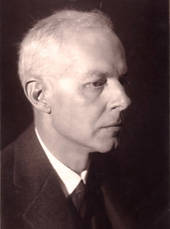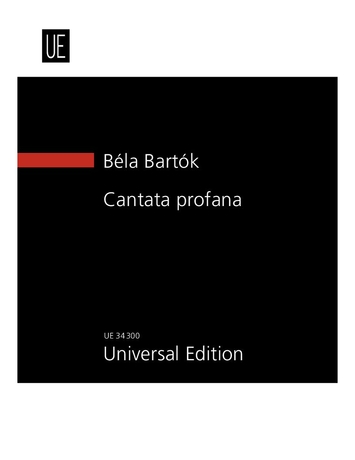

Béla Bartók
Cantata profana
Short instrumentation: 3 3 3 3 - 4 2 3 1 - timp, perc(3), hp, str
Duration: 17'
Übersetzer: Bence Szabolcsi, Béla Bartók, Robert Shaw
Text bearbeitet von: Béla Bartók
Choir: SATB
Solos:
tenor
baritone
Instrumentation details:
1st flute
2nd flute (+picc)
3rd flute (+picc)
1st oboe
2nd oboe
3rd oboe
1st clarinet in A (+cl(Bb))
2nd clarinet in A (+cl(Bb)
bass cl(Bb))
3rd clarinet in A (cl(Bb))
1st bassoon
2nd bassoon
3rd bassoon (+cbsn)
1st horn in F
2nd horn in F
3rd horn in F
4th horn in F
1st trumpet in C
2nd trumpet in C
1st trombone
2nd trombone
3rd trombone
bass tuba
timpani
percussion(3)
harp
violin I
violin II
viola
violoncello
contrabass
Bartók - Cantata profana for tenor, baritone, mixed choir and orchestra
Printed/Digital
Translation, reprints and more

Béla Bartók
Bartók: Cantata Profana for Tenor, Baritone, mixed Choir and OrchestraOrchestration: for tenor, bartione, mixed choir (SATB) and orchestra
Type: Klavierauszug (Sonderanfertigung)
Language: Deutsch | Ungarisch

Béla Bartók
Bartók: Cantata Profana for tenor and baritone soloists, satb choir and orchestraOrchestration: for tenor, baritone, mixed choir (SATB) and orchestra
Type: Klavierauszug
Language: Deutsch | Englisch

Béla Bartók
Bartók: Cantata Profana for tenor, baritone, mixed choir (SATB) and orchestraOrchestration: for tenor, baritone, mixed choir (SATB) and orchestra
Type: Chorpartitur
Language: Deutsch | Englisch

Béla Bartók
Bartók: Cantata profana (ung., dt.)Orchestration: for tenor, bartione, mixed choir (SATB) and orchestra
Type: Dirigierpartitur (Sonderanfertigung)
Language: Deutsch | Ungarisch

Orchestration: for tenor, bartione, mixed choir (SATB) and orchestra
Type: Studienpartitur
Language: Deutsch | Englisch
Sample pages
Audio preview
Work introduction
Béla Bartók's large-scale work for tenor, baritone, double mixed choir and orchestra tells the story of a father and his nine sons, who go out to hunt a stag but are themselves transformed into deer in the process. The Cantata profana, subtitled “The Magical Deer”, was written in 1930 and inspired by Romanian Christmas stories, using pagan and mythological motifs to combine natural, didactic and symbolic elements in the story. The strictly rhythmic narration of the choir and the sharp, melismatic statements of the soloists form a multi-facetted contrast.
